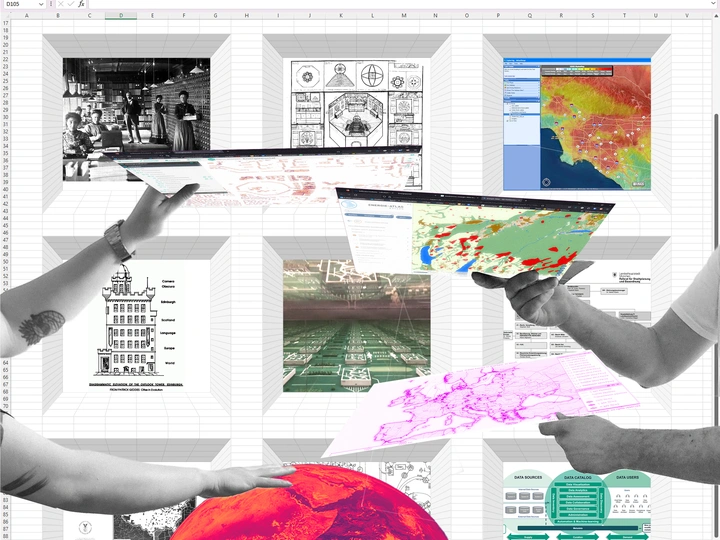Mirror Worlds and Urban Doppelgangers

Nick is a researcher and designer working at the intersection of Architecture, Digital Design, and Urban Theory. Nick studied Architecture at the Technical University of Munich and the Aarhus School of Architecture. Currently, he is a research associate at the Chair of Architectural Informatics at the Technical University of Munich.
His research explores Digital Twin Cities as architectural and cultural artifacts. Nick experiments with collaborative and performative approaches to highlight material, situated, and political aspects of digital technologies. His dissertation project is situated between the TUM Chair of Architectural Informatics (Prof. Frank Petzold) and the Institute for Urban Anthropology (Humbolt University Berlin, Prof. Ignacio Farías).
Nick investigated (urban) digitization through speculative practices like Cybernetic Séances (Deutsches Museum Munich, 2023, with Lena Stupitzky) or collaborative workshops and exhibitions (“Metastadt Tools of Play” Architekturschaufenster Karlsruhe, 2022, with Prof. Nathalie Bredella). He was involved in several projects between Architecture Theory and Performative Urbanism. He co-curated the exhibition projects like “Siedlungsrequiem” (Lothringer13 Art Hall, 2018, Munich, with Elena Markus) and “Women in Architecture - Facts and Figures” (WIA Festival, 2021, Berlin, with the TUM Parity Board). Additionally, Nick worked with performances and installations in public spaces - like the installation ”Glyptotheke” at Königsplatz (2019-2023, Munich, with Maria Schlüter). In this context, he cofounded the architecture collective P.O.N.R.
Nick wrote for journals like Arch+ and the International Journal of Computation in Architecture. In 2022 he was awarded the Promotional Award for Architecture of Munich as a member of P.O.N.R. Also, he received the Senator Bernhard Borst Award of the TUM Department of Architecture and scholarships from the “Studienstiftung des Deutschen Volkes” and the “Max-Weber”-Foundation.
Digital shadows are cast on urban space, while Digital Twins mirror the city through 3D models, sensors, and simulation. Despite these metaphors’ dualism, such “twins” manifest as a multiplicity of things: A stand-in city to be hit by virtual disasters (we watch with fatal pleasure). Sometimes, a digital doppelgänger threatening to replace the real world. On occasion, a backup of urban areas that soon may be lost.
Digital Twinning appears less as the abstract production of evidence, but as a situated mode of understanding and planning urban spaces, with its own histories, politics, and poetics. Inspired by Science Technology Studies and Cyberfeminism, this project focuses on the material and performative dimensions of urban modeling and investigates historical trajectories and power differentials inscribed into these activities. Through collaborative modeling experiments with local stakeholders, the project explores the speculative and hallucinatory potential of (Digital) Twinning:
Exercises in seeing double through bricolaged sensors and embodied data-making.
Remixing layers of municipal data catalogs spanning from census data to everyday knowledge to formations on a geological timescale.
Calculation as a mode of world-building and situated speculation.
Experiments with agile and idiotic models of action.
A hybrid data-rama emerges from these modeling activities: a situated (Digital) Twin made of data, cardboard buildings, interactive simulations, and material diagrams. Instead of detached evidence, this model entangles multiple actors and lets them explore desirable and perilous urban scenarios.
Related to my dissertation project, I am investigating such twinning modes in collaboration with architecture students, municipal officials, and civic initiatives in Munich. These approaches will be applied and contextualized for designated LINA events through modeling workshops in collaboration with other LINA fellows and an exhibition of the emerging data-rama.